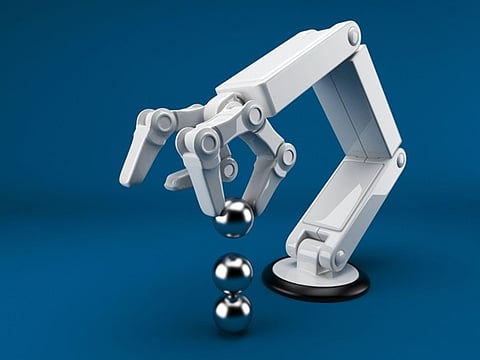

As robotics and artificial intelligence converge, the world is sleepwalking into an era in which machines can respond to complex environments with a sophistication once the preserve of science fiction. LLMs (Large Language Models) are so last year. The next wave of giga-intelligent AIs will be trained on VLAs: Vision-Language-Action models.
Powered by natural language instructions, VLAs have the ability to guide robots by drawing upon continual visual feedback from their environment. By combining human brain-inspired architecture, large-scale multimodal training, and innovative reinforcement learning techniques, VLAs will transform the way robots interact with their surroundings and one another.
That’s a lot to take in. So let’s unpack this near future through a case study on one project in particular that embodies the shape of AI models to come. Developed by ASI Alliance, ASI<Train/> aims to deliver domain-specific AI models – and it’s set its sights on conquering one vertical in particular: robotics.
For decades, the field of robotics has relied heavily on pre-programmed actions and heuristic methods, limiting machines to rigid, predictable responses. This is fine when you’re trying to train a machine to pick apples, but this static approach falters when confronted with dynamic, real-world conditions, from shifting assembly lines to unpredictable warehouse layouts.
The challenge lies in developing AIs that grant robots contextual awareness and the ability to reason when conducting complex tasks. But recent breakthroughs in AI, particularly in Large Language Models (LLMs) and multimodal learning, have made it possible to address these barriers. By integrating vision, language, and action models, robots can now understand instructions expressed in human terms and refine their behavior based on continuous feedback.
Drawing upon pioneering work in Vision-Language-Action (VLA) models, ASI<Train/> aims to produce robots that can decode natural language instructions, interpret visual input, and translate this understanding into precise actions. This approach promises to eliminate traditional heuristics, such as complex instructions for every possible scenario, in favor of a system that learns and generalizes across tasks.
Initially leveraging open-source models like OpenVLA, ASI<Train/> will tailor these tools to serve specific robotic needs. The goal is to move beyond existing benchmarks to create state-of-the-art models capable of understanding richer inputs and executing more complex, multi-step operations. Over time, this will involve upgrading foundational models and incorporating reinforcement learning so robots can learn from trial and error. Yes, it’s about making machines more human.
One of the most intriguing aspects of ASI<Train/> is its vision for long-term development. Its team proposes models that mimic cognitive structures found in the human brain, with larger networks handling strategic planning and smaller specialized models focusing on fine-grained motor control. This hierarchical architecture mirrors how humans reason and act.
By allowing models of varying sizes to communicate and coordinate, robots gain the ability to solve problems at multiple levels of complexity, whether it’s reaching for a new tool on a manufacturing line or navigating a crowded restaurant floor without upsetting drinks.
Reinforcement learning adds another layer of sophistication. Instead of relying solely on static training data, robots can refine their actions based on real-time outcomes, gradually improving their performance. This iterative learning process, accelerated in virtual simulation environments, ensures that deployed robots become more capable and reliable over time. The more they learn, the smarter they get.
The potential applications for robots trained on Vision-Language-Action models extend far beyond the lab. Enhanced AI/ML models will reshape industries ranging from manufacturing and logistics to healthcare and hospitality. Automated production lines will become more flexible and responsive, reducing downtime and waste. In warehouses, robots will handle complex inventory management with minimal human oversight, improving accuracy. In hospitals, intelligent robotic assistants will support medical staff and aid patients in rehabilitation.
All that is still some way off, but in the here and now, the future is being built before our eyes. More adaptive autonomous robots will ultimately save billions of dollars through engendering greater efficiency, but more than that, they will unlock new forms of innovation while delivering better services to the public. You don’t have to be an AI boffin to appreciate that we’re on the verge of one of the greatest paradigm shifts in human history. And for once, that overused epithet – paradigm – is warranted.
While the final form of VLA-trained robotics is broadly knowable, even this early in their adoption cycle, there are still countless unknowns to grapple with. As the imagineers of ASI<Train/> have acknowledged, there remain challenges in terms of scalability, data availability, and integration with existing robotic control systems to solve.
It’s a long road, but the foundations are in place. Starting with known models and enhancing them step by step – adding new training data and carefully testing in simulation before physical deployment – the ASI<Train/> team hopes to steadily advance toward robots that are more adaptive and genuinely intelligent. Each training run, simulation test, and optimization cycle forms a stepping stone toward a more interconnected, AI-driven future.
The transition from machines that execute predefined tasks to ones that evolve with human-like adaptability is fast approaching. We’re nearing an inflection point at which robots will be able to handle a broader array of tasks, collaborating with one another and integrating seamlessly into human environments. In doing so, they will not only improve operational efficiency but also spur the creation of new service industries.
Not everyone will take to this new normal: some people will lose jobs; others will resent sharing a locker room with a robot that’s smarter than them and doesn’t require four weeks’ annual leave. But if human history has taught us anything, it’s that technology can’t be rolled back. Like it or not, the robots are coming. We might as well mold them in our image.
